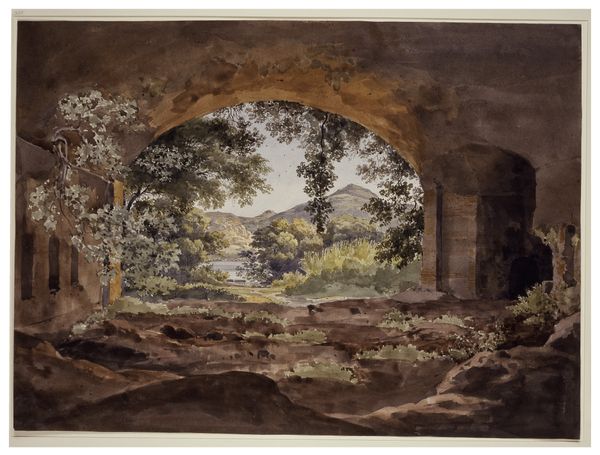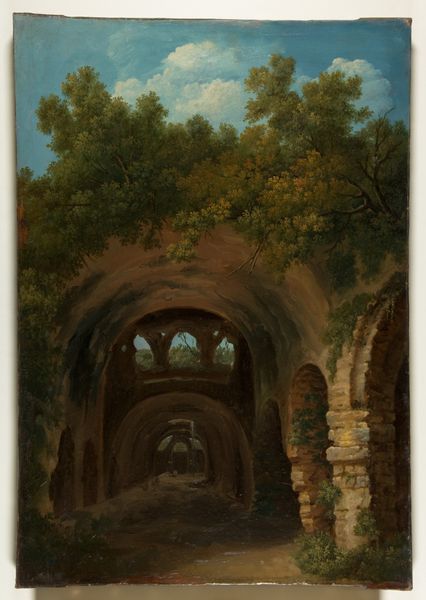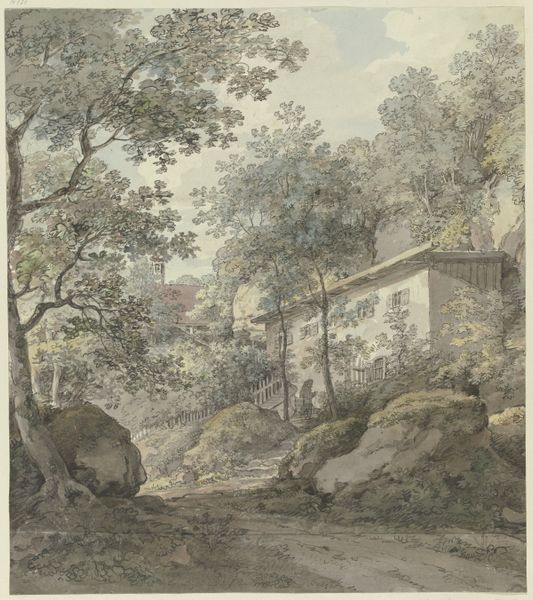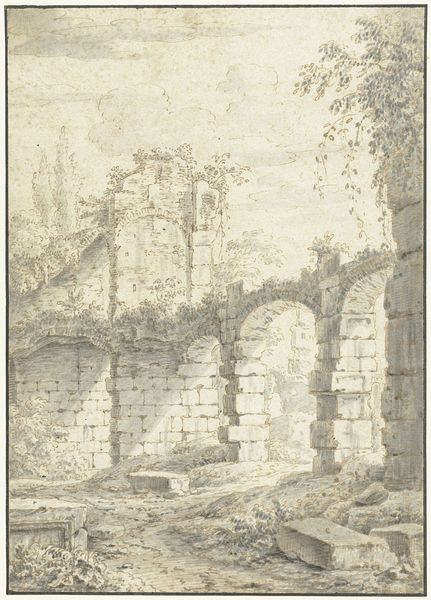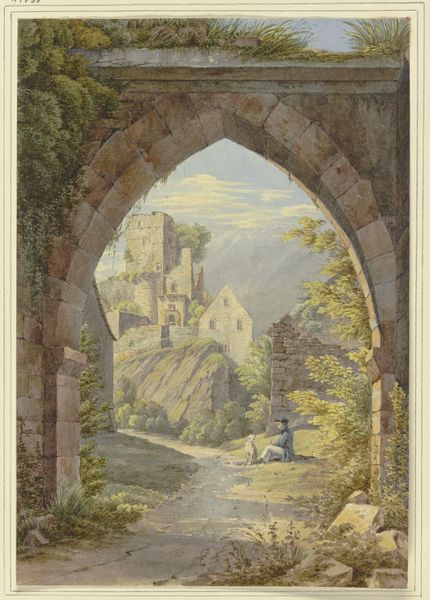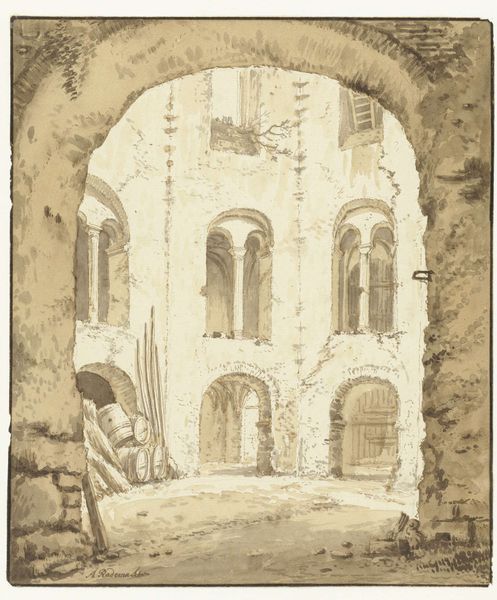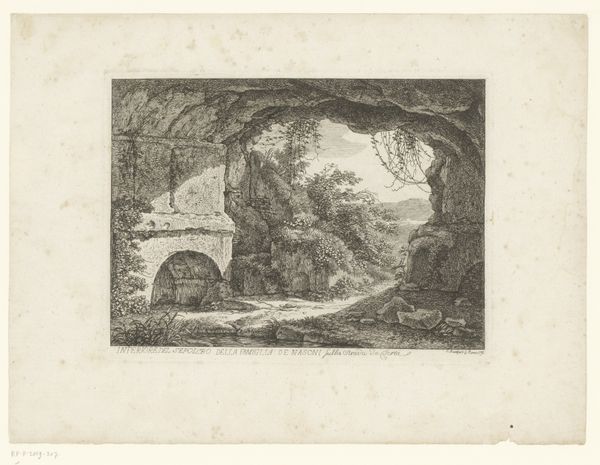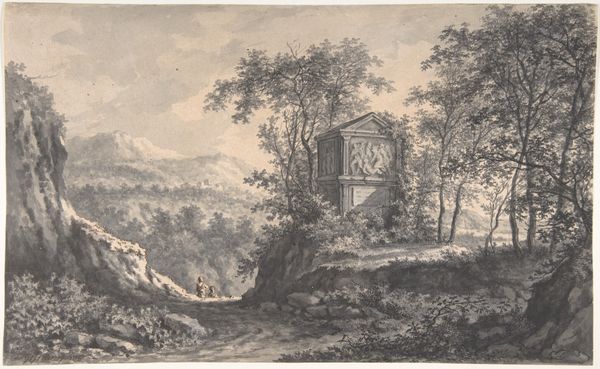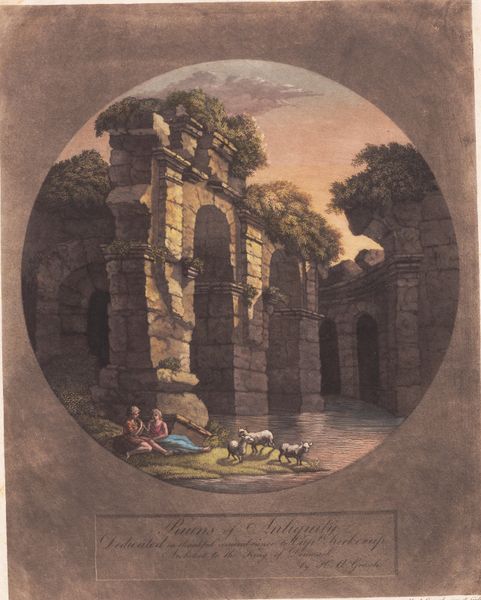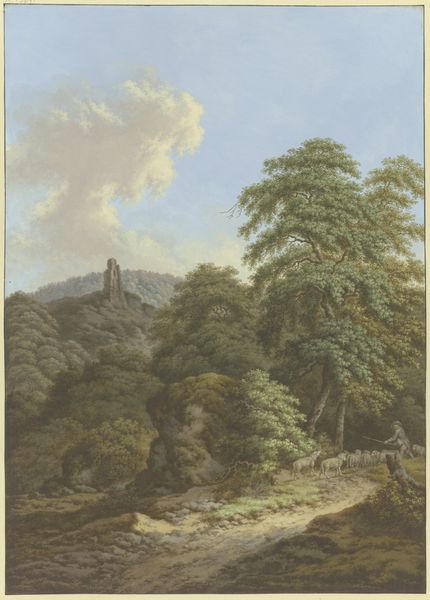
drawing, painting, print, paper, watercolor
#
drawing
#
water colours
#
painting
# print
#
landscape
#
paper
#
watercolor
#
romanticism
#
genre-painting
Dimensions: 260 mm × 179 mm
Copyright: Public Domain
Curator: Take a moment to cast your gaze upon "Interior of Conway Castle," an 1845 watercolor and pencil drawing now residing at The Art Institute of Chicago. The hand behind this marvel is that of Elizabeth Murray. Editor: I’m struck by the romantic decay, how nature just gobbles up this man-made structure. The stones are so muted and worn down, and these plants completely take it over...you can feel how time passes. Curator: It certainly captures a feeling of Romanticism, and note how Murray allows the watercolour to bleed softly, reinforcing that delicate passage of time that you’re keying into. The materials used, watercolour and pencil on paper, create an immediacy, almost as if she sketched this scene en plein air, you know? She makes every stone in the architecture alive with light and pigment. Editor: Absolutely! When you think about paper as the foundational material, then you examine how that impacts artistic intent and material value— it becomes evident in every delicate wash that this wasn't only about the structure itself, but this ruin suggests more a reflection on history and the vulnerability of all things. Look at the labor and technique required to produce those layered washes; Murray's material choices absolutely speak to a very slow production. Curator: Indeed. Murray seemed to understand, like so many Romantics, that nature is relentless and indifferent to human endeavors. Perhaps, though, this gentle take-over reveals a celebration of it. Like watching theatre being performed by overgrown moss, the artwork presents that which grows, survives, evolves even out of decay and the effects of ruin on stone. Editor: I wonder if it touches on the rapid industrial growth that was really ramping up when Murray produced it. This kind of Romantic ruin reminds me of William Morris or Pugin. They saw architectural production move so fast at that time and these men saw it destroy traditional materials and ways of making and the human. Curator: That’s such an interesting connection. Looking again, I think it is more complicated: here's nature actively, beautifully reclaiming this relic. There’s melancholy in that vision, but also perhaps some catharsis. Editor: A fitting end: in process lies the heart of cultural transformation; this artwork makes sure the castle becomes reborn through that which decays, but it is only with a painter’s brush that she finds renewed labor!
Comments
No comments
Be the first to comment and join the conversation on the ultimate creative platform.
